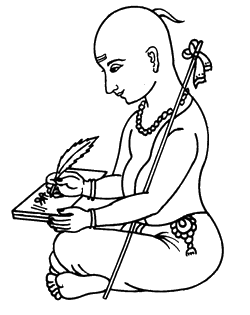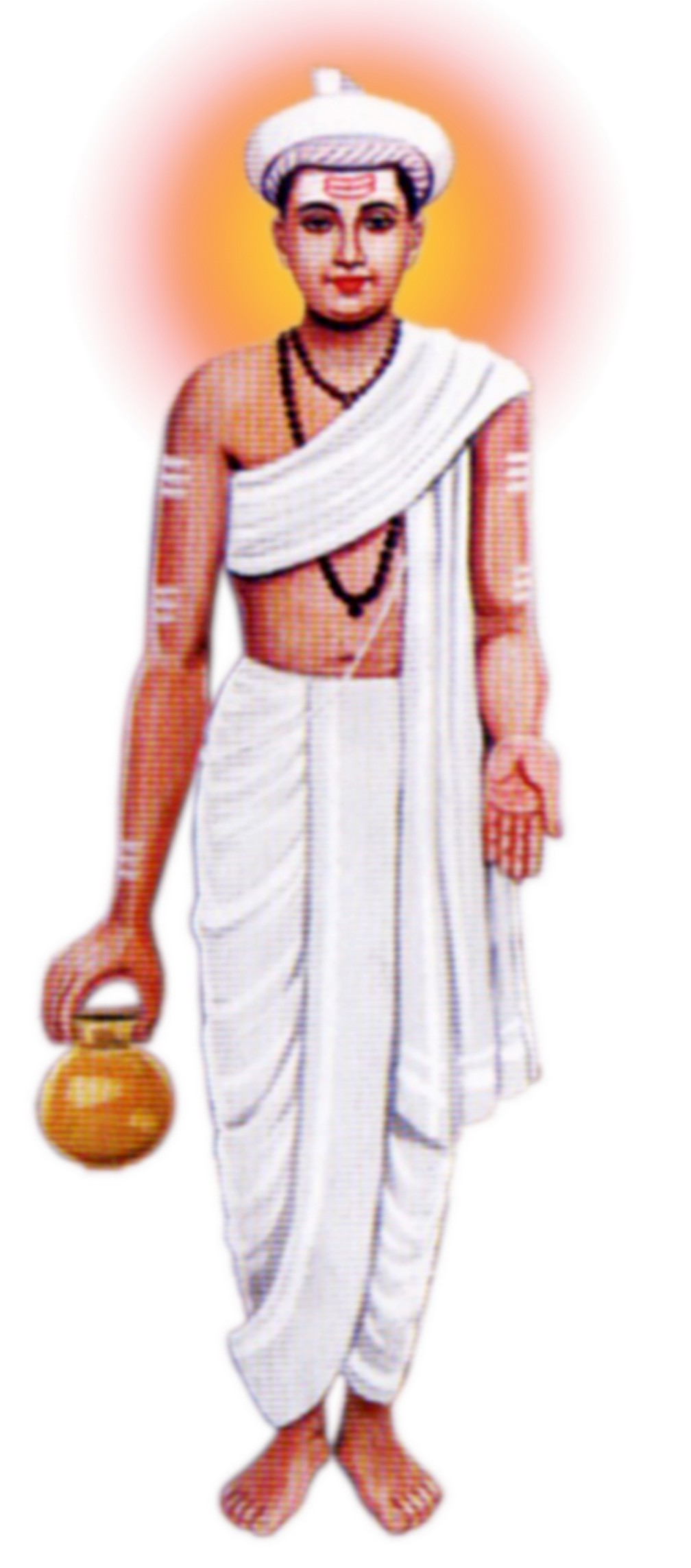Study
ghana eva sarvata tishthati |
sa saptabhumi turiyavastham prapnoti
brahmavidvarishtha iti uchchate ||

For the little Chidambara, his home was his Gurukul (School-house) and his father was his first teacher. Shri Martand Dixit's spiritual discourse to his son was always preceded by an invocation to the Gods od knowledge, that is Lord Ganesh and Goddess Saraswati. He used to chat hymns in praise of them and then taught alphabets. He offered Vedic hymns and shlokas to gods. Thus the little Chidambara was gradually introduced to the complex subjects such as Sanskrit, linguistics, grammar and interpretation of Vedas etc.
When Chidambara reached 8 years of age (the time of investiture of the sacred thread i.e. janawa/ Janiwar) the thread bearing ceremony was arranged at Murugod. The white thread is charged with spiritual values. It is a part of ritual or initiation into a spiritual faith. The sacred thread is called janawa / janawai / janiwar. It is worn around te neck and the other half of the upper part of the body. The preists administer the holy pledge to the wearer and amidst the invocation of Gods, prayers and hymns. During the ceremony, Chidambara had an aura of the bright Sun. His footwear ad been made of krishnajina (skin of deer). It is preserved till date at their successor’s home at Madihal in Dharwad. The devotees can see it for themselves. When the ceremony concluded on a pious and serene note, Shri Martanda Dikshit introduced Chidambara to the mysteries of four Vedas, six shashtras, eighteen puranas (mythological scriptures), yagnikas that is, technicalities of worship of holy fire at altar, sootra bhashya (origin and formulae of holy speech), intricacies of mantras and many other related subjects. Brother Prabhakara also joined him in his studies.
One day, when Martanda Dikshit was walking outside Muragod, he saw a field with full of stones. This attracted him because he was searching for a place for his anusthana (a holy deed of prolonged meditation). He thought of purchasing the land and met the land owner for further details. Shri Martand Dixit told about his wish and requested the landlord, who readily agreed to sell. The place was bought for ninty nelkanthi ( the currency of the princely state of Sangli). The area was cleared of stones and brought under cultivation. On the west of the plot a water reservoir was made. While deepening the reservoir, due to the red soil, the water of the resevoir became red. In Kannada it is called "Kempu keri". It is also called red water tank (Kengeri). Since then it is called as Kengeri. Tulsi, bilva, aala, audumbar, ashwath and holy trees were planted and grown in the area. A big pedestal was constructed under the bilwa tree which became a place of anusthana for Shri Martand Dixit. Once, while Sri Martanda Dixit was walking with Chidambara at Kengeri, he apprised him of how holy that place was for him. He expressed his wish to live there forever, Chidambara quickly grasped its implication in the later years. It was here that Sri Martanda Dixit’s mortal remains were laid.

